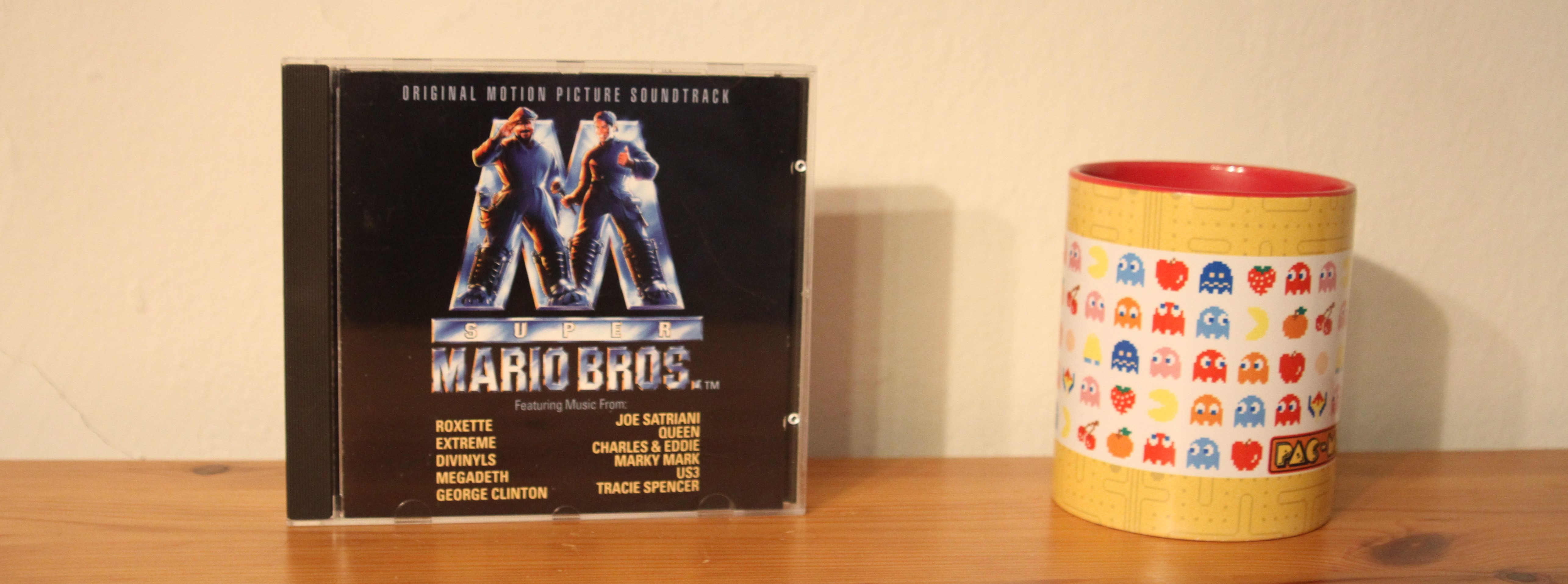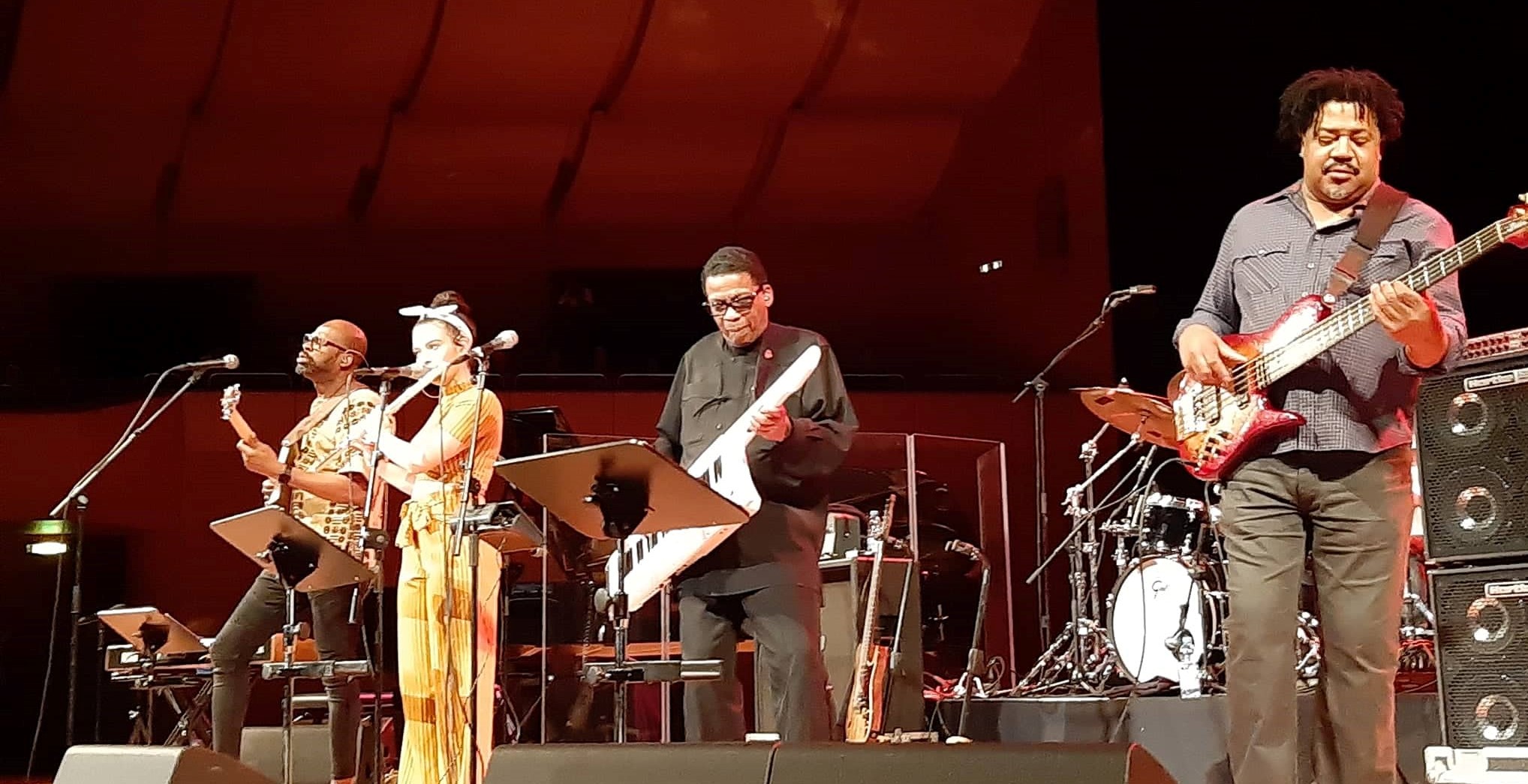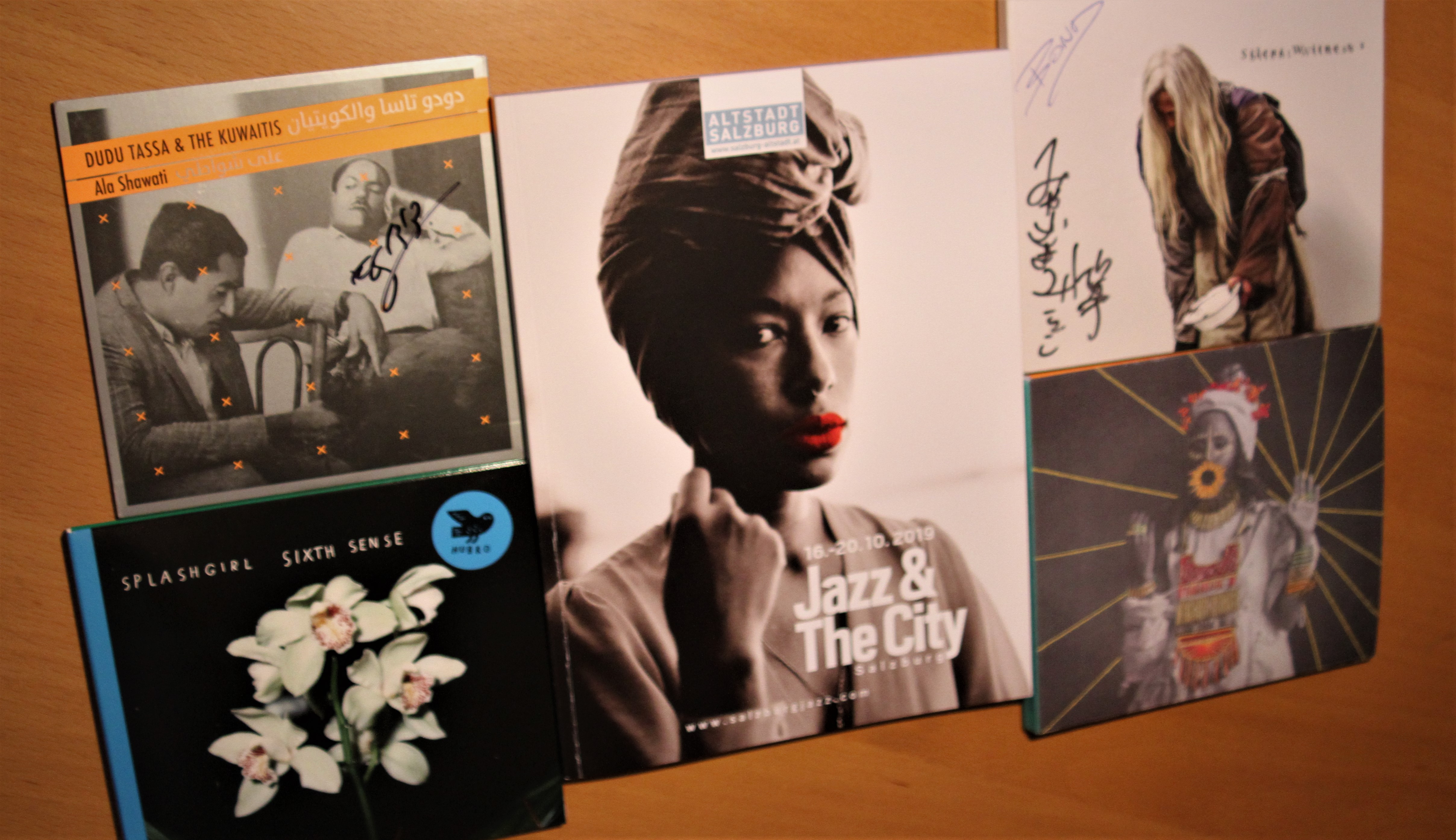The following is a concert review of Herbie Hancock’s appearance at the Ted Mann Concert Hall in Minneapolis, MN, on November 8, 2002. It was written during my college days, for a class called „The Music of Black Americans“.
Pianist Herbie Hancock has had a career spanning over 40 years, in which he performed everything from acoustic hardbop to jazz-funk, disco pop, electro, African music, experimental improv, hip-hop and classical music – and apart from that, Hancock is justly considered a keyboard and synthesizer pioneer and has also won an Academy Award for creating the soundtrack to 1986’s ROUND MIDNIGHT. With a musician who has explored so many different directions, often enough several of them at once, one is bound to expect surprises.
When Hancock played Ted Mann Concert Hall in Minneapolis on November 8, 2002, his band was an acoustic quartet including Terri Lyne Carrington (drums), Scott Colley (bass) and Gary Thomas (saxophone) – an entirely different approach than last year’s acid trip hop fusion group FUTURE 2 FUTURE (which also had Carrington on board), or this spring’s DIRECTIONS IN MUSIC combo, which celebrated the music of Miles Davis and John Coltrane. But since Hancock has always both been looking forward to new territory while at the same time revisiting and reinventing his past music, the new group complemented his earlier explorations rather than simply leaving them behind.
Without an introduction, the group started with an over 30-minute long, barely recognizable rendition of Hancock’s „Dolphin Dance“ (first recorded on his 1965 album MAIDEN VOYAGE) which segued into „Virtual Hornets“, from his latest CD FUTURE 2 FUTURE (the composition was co-written by the album’s producer Bill Laswell and referred to a piece Hancock recorded for 1973’s SEXTANT called „Hornets“). As if the combination of a hardbop standard and an electronica song (played entirely acoustically, of course) was not unusual enough, Hancock showed that his piano playing has moved towards freer territory in the past few years – heavy chords, expressionistic runs and rhythmically complex fills showcased an experimental side which has rarely been heard from him since his Mwandishi trilogy in the early 70’s (MWANDISHI, CROSSINGS and SEXTANT). He even plucked the piano strings a couple of times.
But as free as Hancock’s – and everyone else’s – playing was, the group chemistry held everything together. Carrington’s fierce rhythms added a lot of urgency to the proceedings without overpowering them; every once in a while, she would be content to add gentle cymbal sounds or move towards a more funk-oriented style. During her best moments, she seemed to play several rhythms at once, and while it was virtually impossible to figure out what the basis of her beat was, she always kept an effortless flow.
Scott Colley apparently stems from the „less is more“ school of music; oftentimes, he complemented the rhythmic tornado of Hancock & Carrington with a few single tones which nonetheless glued everything together. Colley’s playing showed maturity and confidence, with his huge sound grounding the music and playful soloing showcasing a compositional approach at work. Like Colley, saxophonist Gary Thomas remained calm, waving gentle melodies into the group’s musical journey.
The set also included Carrington’s composition „Middle Way“ (from her 2002 album JAZZ IS A SPIRIT, on which Hancock guested) and the funk version of one of Hancock’s biggest hits, „Watermelon Man“ (originally on his first album, 1962’s TAKIN‘ OFF; the funk version was arranged by drummer Harvey Mason and can be found on 1973’s HEADHUNTERS), on which Thomas switched to flute. Throughout the performance, the musicians kept making eye contact to communicate their ideas; solo space was evenly split and Hancock himself was modest enough to leave the spotlight to his co-musicians, often enough restraining himself and congenially accompanying his group.
Needless to say, the audience reaction was overwhelmingly enthusiastic – especially towards Carrington and her relentlessly inventive soloing. Once again, Hancock had managed to explore new territory while not ignoring his roots or the many journeys he took during his career. And even for the new listener, it was easy to see why he is justly considered the most important jazz musician alive.
![]()




